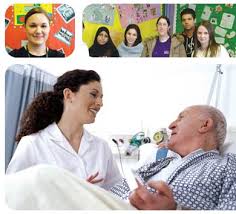BILAL

According to doctors and health practitioners, one should try to do at least 30 minutes of exercise daily in order to achieve good health. Exercise not only keeps us fit but also reduces the risk of many fatal diseases such as blood pressure and heart stroke. Exercise can be any form of physical activity such as walking, swimming or cycling.
Any activity that increases your heart rate and makes you slightly out of breath can be called exercise. Daily exercise can be a part of ones regular routine as well as something that one does in order to keep fit. Exercise can also be carried out in form of daily chores or any other activity that one likes.
In order to stay healthy and maintain better health, doctors recommend at least 30 minutes of daily exercise. 30 minutes is the minimum time to gain health benefits. However, one is not compelled to do all at once; it can be done in short periods with rest in between to avoid exertion.
Different Modes of Exercise
Exercise does not mean to exert yourself or forcefully do what you do not like. It can be an activity which you like and enjoy. It can range from walking to swimming to hiking or cycling. It can also be some household chore that you enjoy doing.
Exercise can be made more fun when it is carried out with some one else. A game of badminton or tennis could be played with a partner giving a healthy exercise to both.
Benefits of Daily Exercise
Daily exercise, besides providing many benefits, saves one from many illnesses and problems. Giving 30 minutes to daily exercise can not only lead to better health but also provide a short period of peace and recreation.
It helps in reducing weight.
It helps in keeping stress and depression away, as it is a good way to work out.
Helps in burning extra calories and fats.
The risk of heart diseases and angina is reduced with the help of exercise. Exercise is good for heart muscles and reduces risk factor.
Exercise helps in maintaining normal blood pressure and cholesterol level.
Regular exercise helps to prevent osteoporosis in women and strengthens the bones.
Regular exercise is very effective in reducing the chance of colon (bowel) cancer as well as breast cancer in women.
For older people it helps in maintaining their balance, especially if they exercise regularly.

BILAL

Although there is no cure for lupus, there are various treatments which help minimize the symptoms and reduce the inflammation in order to maintain normal functions. And while the diagnosis and treatment of lupus tends to be a joint effort between the patients and health professionals, the treatment of lupus crucially depends on the nature of the symptoms and as well as the organs affected. Also, as a result of individual systems, it is not uncommon for one treatment is to be effective for one patient while it is just as ineffective for the next. Desired treatment goals include managing symptoms and maintaining remission for as long as possible.
Depending on which organ or organs are involved, medications are often prescribed for lupus patients. Finding the best treatment for a particular patient, however, is usually a difficult task for physicians, thus leading to him/her [the physician] trying different medications until the desired affect is achieved. The primary aim of lupus drugs is to reduce inflammation, which is a part of the virtually all cases of lupus.

BILAL

The story began about 2 years ago. When my younger brother’s wife obtained an appointment from Dr. Shireen Bhutta, a senior doctor and gynaecologist at Dr. Ziauddin Hospita, Clifton campus. This appoint was for a routine check-up for her pregnancy. She may be senior gynaecologist but to my brother she acted like a writer of many scary movies. She scared my sister-in-law like an ugly and horrifying ghost. Rather than listening to the patient she spent most of her time in writing several tests and Vitamin A supplement which is never allowed to any woman during pregnancy. Since it was her first pregnancy she didn’t resist and accepted a bundle of prescription containing tests, medicines and vitamin A supplement. The doctor was succeeded in catching up a fortnightly client. Luckily, she got cat in the bag. Time kept passing by and she receives too many visits from the patient on an going basis. When baby became due she vanished from the hospital. When enquired we were told that she’s attending a conference in Islamabad and will not be available for a long time. We were shocked to hear this news. She never informed that she was going to attend the conference leaving the mother helpless. Anyway, we used the replacement doctor service, and so unluckily, an immature and inexperience lady doctor was given in our fate. Now the interesting part was the nurses in the hospital. The morning nurses and the evening nurses were two different things like hell and heaven, earth and sky, hot and cold, fire and ice, Khursheed Mahmood Qusuri and Condoleezza Rice. A big controversy between the two groups, I would say. Apart from that, we found big discrepancies between the doctor’s and nurse’s actions. If morning shift said YES to something then it was obvious that evening shift would say NO or vice versa. The patient became a sandwich between the two groups. This also resulted a really bad care but FREE-IN-THE-AIR DESI instructions and remedies suggested by the controversial group of nurses and doctor. An apple was never an apple for other shift, it was, indeed, an orange for them and quite interestingly the doctor declared it an apricot. It was hard to give judgement who’s right and who’s wrong

BILAL

On this year’s World Health Day, let us focus on addressing issues that can improve health status of women. A wide array of socio-economic, cultural and gender-based inequalities continue to aggravate risk for women.
The latest effort in this direction was a symposium on ‘nutrition in women’ held in New Delhi . Its main aim was to draw attention to the very pertinent observations of a ‘Multi Centric Study on Nutrition in Women’, conducted jointly by the Department of Science and Technology (DST) of Government of India and the Diabetes Foundation of India (DFI), and ably coordinated by All India Institute of Medical Sciences (AIIMS), Delhi . The symposium was followed by a consensus conference on ‘Indian Diets for Prevention of Obesity and Related Disorders’.
It is high time we took a serious note of the health disorders in women arising due to age old dietary habits, coupled with changing life styles and static mindsets. It is indeed a congratulatory effort on the part of DST to conduct a country wide, 3 year long multi centric study (2005 – 2008) on nutrition related non communicable diseases in women over 35 years of age. The objective of the study was to prepare a health/nutrition profile for women by (i) identifying the problems related to non communicable diseases like diabetes, hypertension, obesity and high cholesterol, (ii) developing region specific and cost effective strategies for primary prevention and management of these diseases.

BILAL
The Ministry of Health has admitted that there is hardly any upward transmission of information from around 24,000 Primary Health Centres (PHCs) taking place. The Ministry is dependent entirely on newspaper reports for information and assessment during the outbreak of diseases in many parts of the country. It has been found that it takes nearly an year for information to travel from PHC to the Ministry. The government has concluded that such disease surveillance is meaningless and its data was only for the consumption of government files. GIS and health is the theme of this issue. Two important fields, so close to each other and yet so far apart in a developing country like India. The US and the UK provide lessons as to how these two fields can develop synergy between themselves and to the benefit of the society at large. Health GIS applications are an important area of activity at the National Centre for Health Statistics of the US government. The National Spatial Data Infrastructure (NSDI), the United States Geological Survey (USGS), Census and many other databases, which are important for improved public health surveillance are widely used by the health departments. Recently, the UK national mapping agency signed an agreement with National Health Service (NHS) of UK for developing customised geographic information products for the health community. OSCAR, which tracks precise details of every motorable road in Britain, and ADDRESS-POINT, which can pinpoint any postal address instantly, are already popular among the emergency services run by the health authorities.










